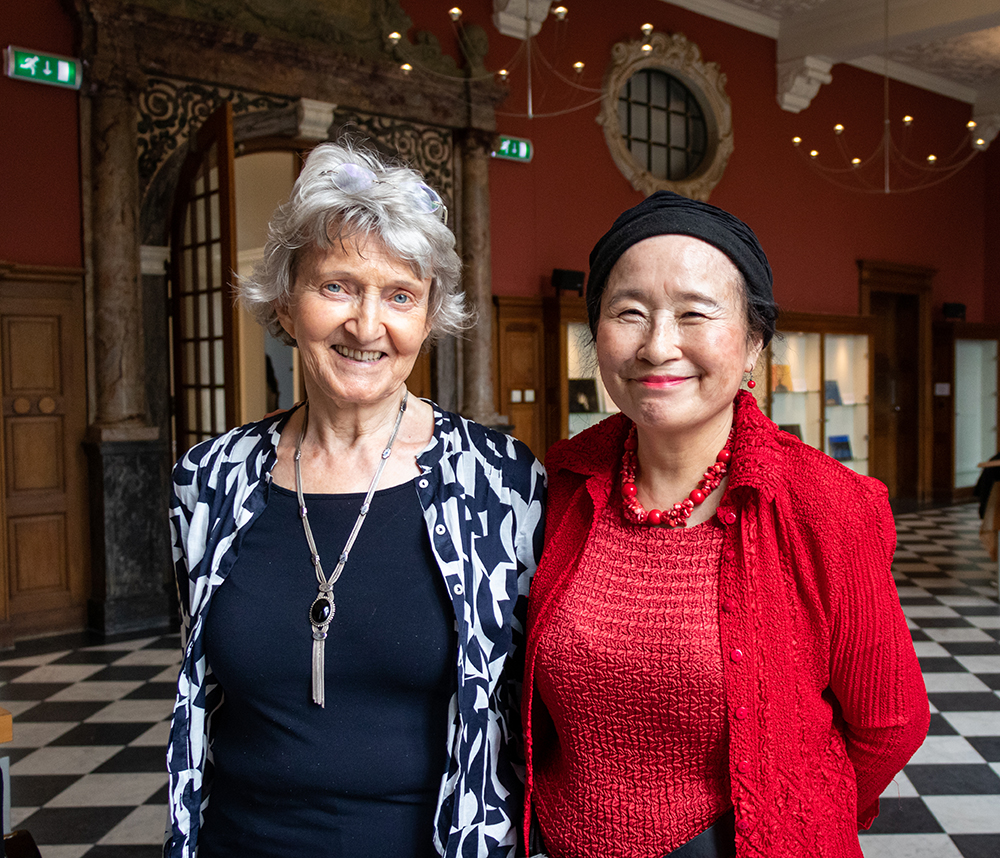
After us the deluge: exhibition portrays the end of humanity
From a catastrophic fire to a flood that engulfs the earth. Mineke Schipper, Professor Emeritus of Literary Studies, has collected myths from the four corners of the earth about the end of humanity. These have inspired 30 striking paintings by Japanese artist Yuriko Yamaguchi. The Dutch premiere of the exhibition is in Oude UB on 15 July.
The exhibition of Yamaguchi’s works together with excerpts from the myths first went on display in Japan last year. ‘Stories about the end of the world are found in all times, cultures and religions,’ says Schipper. The stories that she has collected come from Africa, Asia, Oceania, the Americas and Europe. These kinds of stories are sometimes a response to real-life natural disasters. Schipper: ‘A tsunami after an earthquake, for instance, or a conflagration after a comet strikes. Stories about the end of time magnify our individual fear of death and project it onto humanity.’

Apocalypse and hope
The stories also serve as a moral warning: the world will end if humanity doesn’t change its behaviour. Despite the dark theme, some of the stories end with a surprising glimmer of hope: one or more people survive the apocalypse and humanity can begin again. Yamaguchi portrays this glimmer of hope in some of her colourful, confrontational works – in her painting of an almighty wave, for instance, in the middle of which the only remaining survivors are depicted. Another painting shows the end of humanity in the form of a pile of bones. However, the fork in the painting seems to suggest that someone has survived to clear up the mess.

Meeting at Lake Como
Not all of Yamaguchi’s works are so realistic: she also uses impressionistic patterns to portray disasters. Schipper: ‘It’s fascinating how Yamaguchi visualised the myths.’ The exhibition has its own creation story: Schipper’s valedictory lecture in Leiden in 2009 was on the theme After us the Deluge. She then decided to write a book on the subject and was made an offer she couldn’t refuse by the Rockefeller Center: a month’s stay in Bellagio, a picturesque village on Lake Como in Italy, where artists and researchers get to work uninterrupted on their project. At a presentation that Schipper gave there, Yamaguchi came up to her at the end and asked if she would like to work together.

Tsunami in Japan
Schipper’s book In het begin was er niemand was published in 2010, but the plans with Yamaguchi were put on hold for a while. This was until Japan was hit in 2011 by a severe seaquake followed by a devastating tsunami. The disaster had such an effect on Yamaguchi that she felt compelled to produce a series of works about it. She spent the next few years creating 30 paintings based on selected texts by Schipper. Schipper believes that the theme is now more topical than ever: ‘With global warming and more and more species becoming extinct, we can see the theme gaining traction all around the world. Once again, new stories are appearing about the end of time.’

Mineke Schipper is Professor Emeritus of Literary Studies. The topics that she researches include proverbs and creation myths around the world. The work of Yuriko Yamaguchi can be seen at leading museums such as the Museum of Modern Art (Kanagawa, Japan) and the Hirshhorn Museum (Washington, US). Vulnerability and the struggle of the individual in an interdependent world are key themes in her work.
Linda van Putten
Mail the editors
